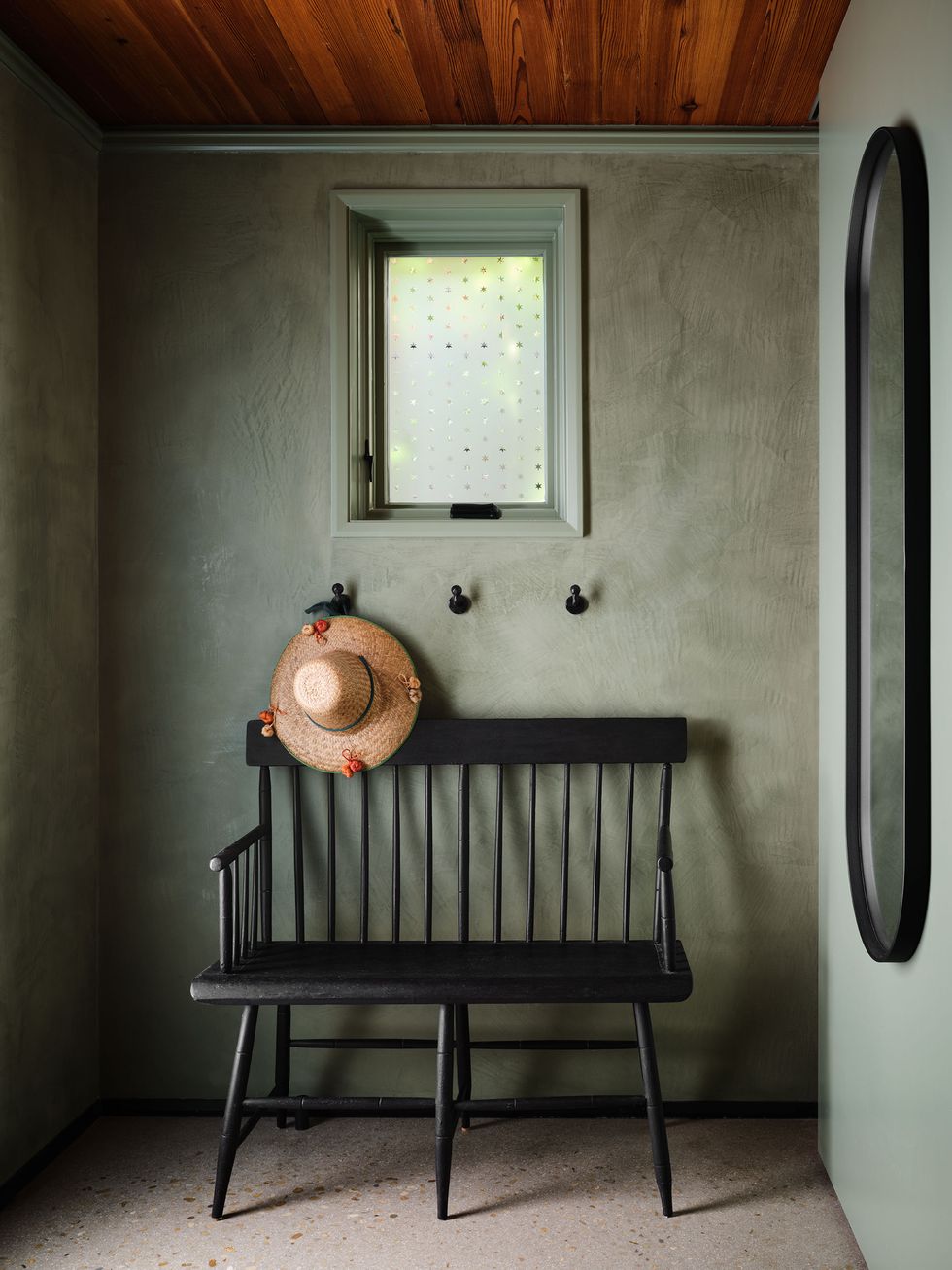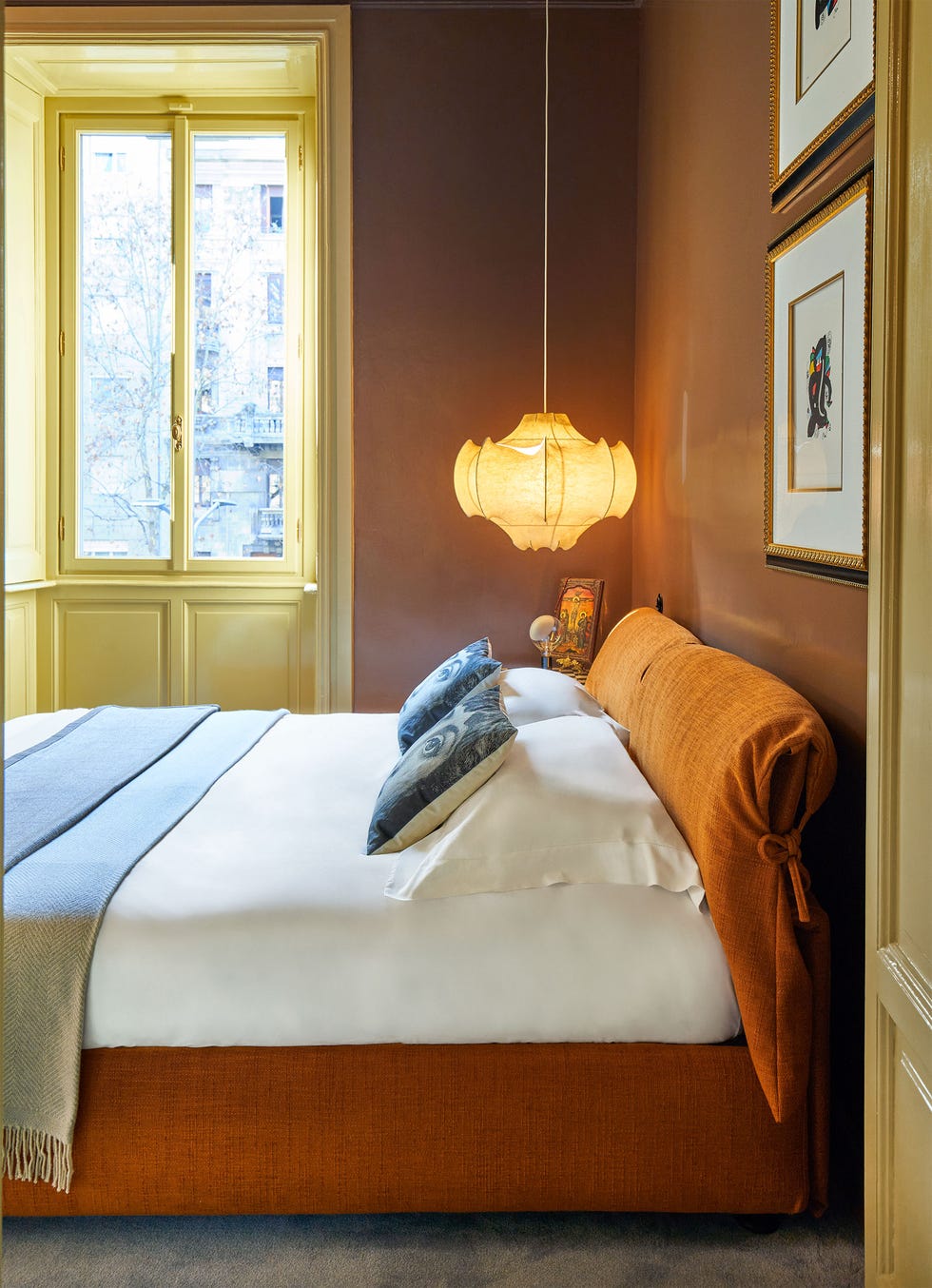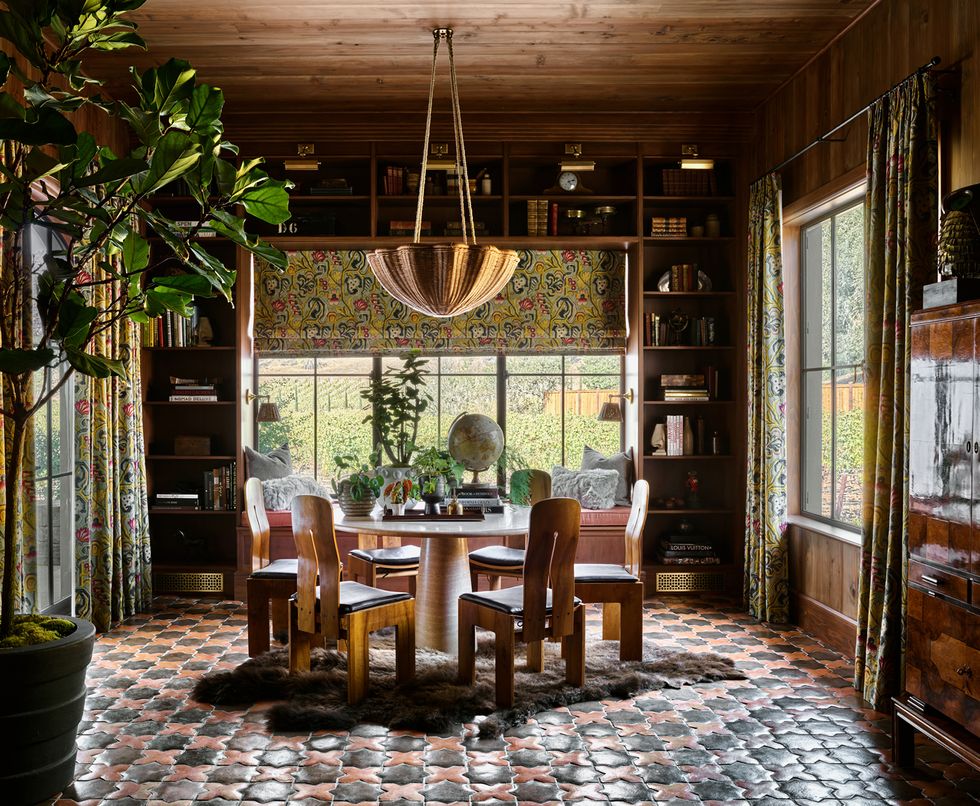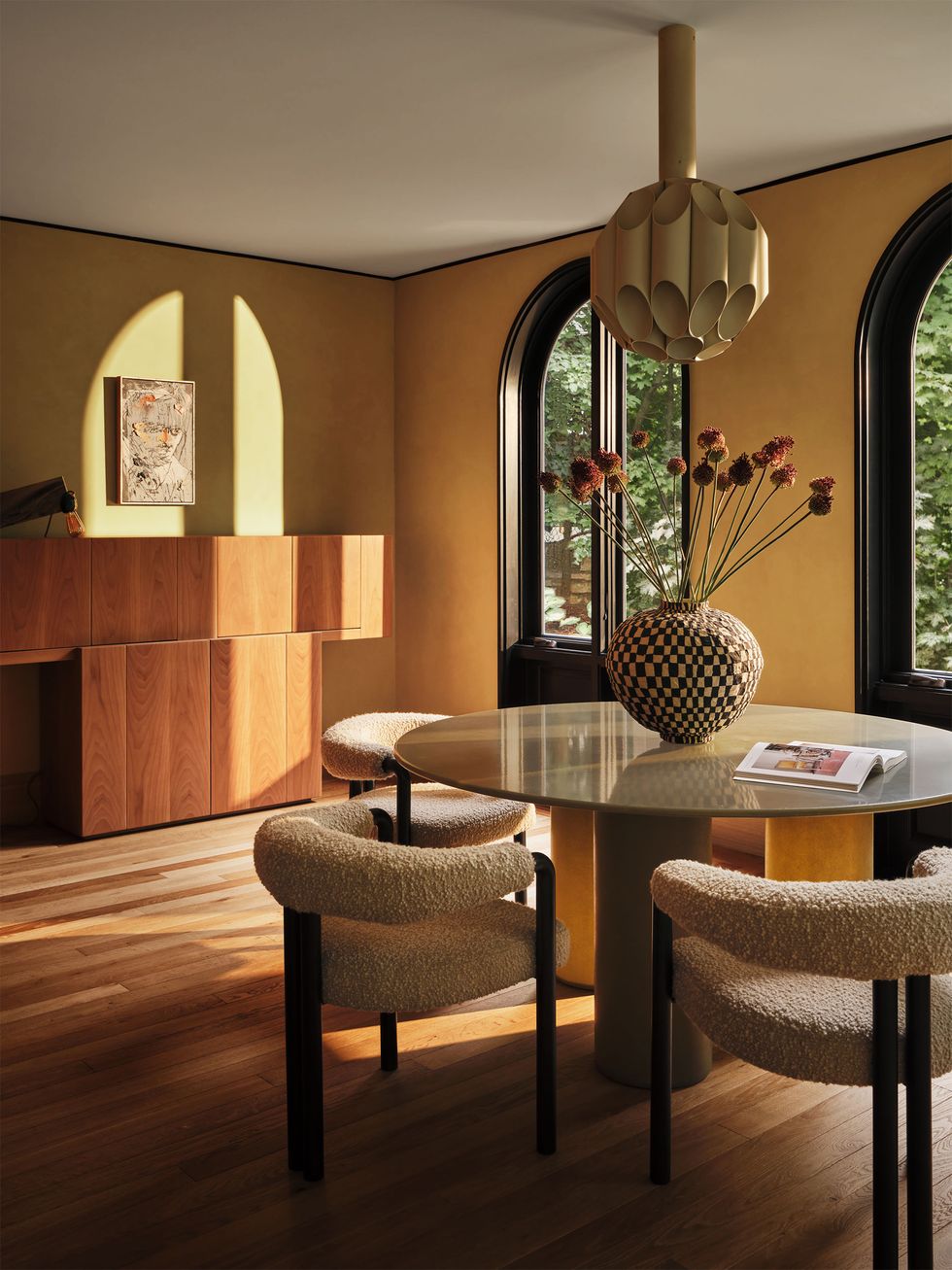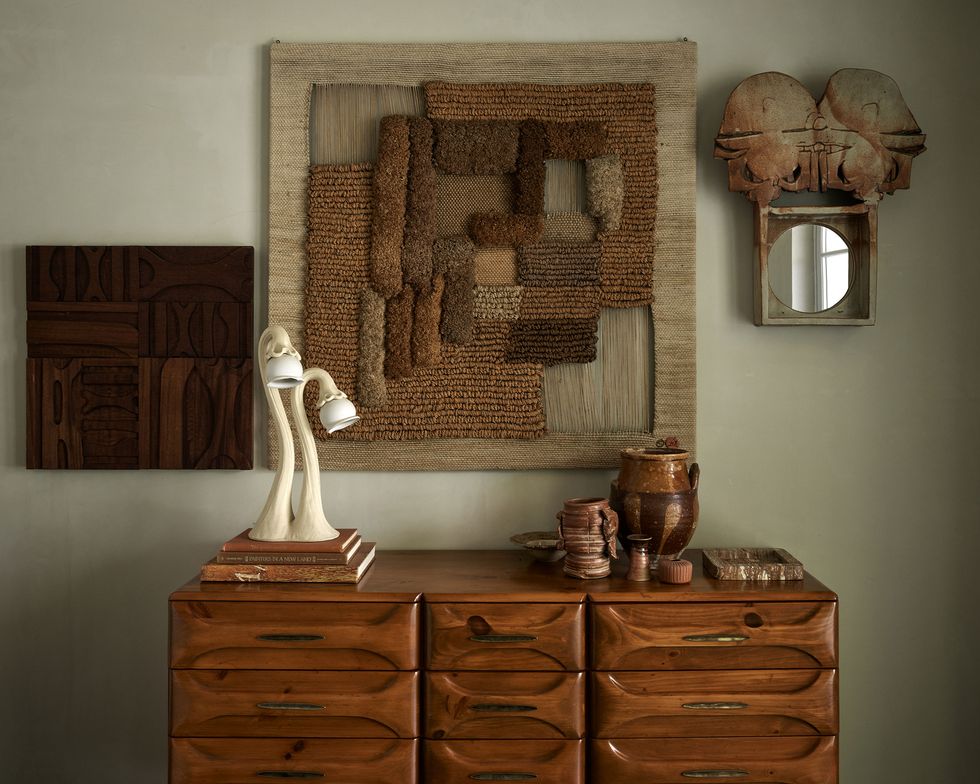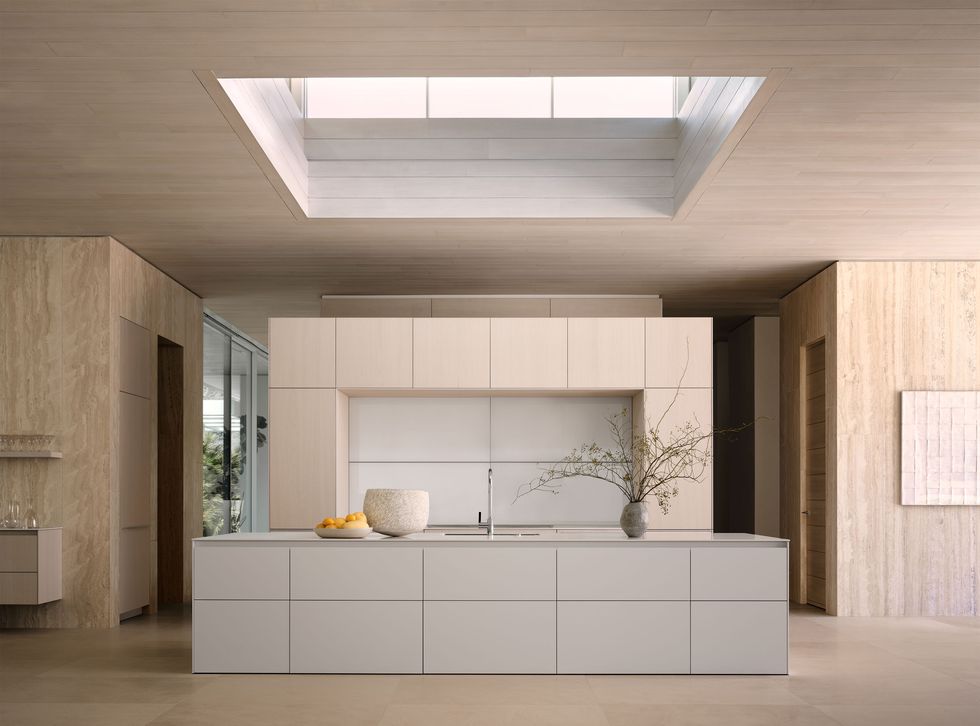With 2024 fast approaching, it’s hard to grasp that we are almost a quarter of the way through the 21st century. And after spending the most recent few years in a tumultuous cycle of uncertainty, we’ve managed to regain a sense of normalcy due, in part, to the time and energy devoted to making our home environments a priority.
Now is the opportunity to reevaluate the decisions that were made to accommodate in-home offices or cozy nooks for cocooning, or to simply take your interior design to the next level. “A focus on previously underestimated areas of the home such as the hallway, pantry, utility room, and laundry room are coming center stage and enjoying a design uplift,” says Gemma Riberti, head of interiors at international trend forecasting agency WGSN. “Searches for ‘handmade’ and ‘eclectic interior design vintage’ are growing steadily on platforms such as Etsy or Pinterest,” she adds.
For more, we’ve spoken to a roster of ELLE DECOR A-List designers and industry experts from across the country to reveal some surprising—and not-so-surprising—home design trends set to unfold throughout the coming year (and beyond). From 1970—and 1870—period revivals to sinewy shapes and the appeal of handmade furnishings, here’s what we’ve uncovered.
High-Gloss Walls Are Out; Texture Is In
Plain white walls are still out, but so are slick, high-gloss finishes that can turn any room into a hall of mirrors. “I think lacquer had its 15 minutes, and seeing your reflection in dining room walls doesn’t interest anybody right now,” says Palm Beach–based interior designer Lori Deeds of Kemble Interiors. “Brushed or hand-applied finish is where it’s at, like Roman clay or limewash [with its sueded texture] or hand-tooled plaster, which I love doing.” According to the results of 1stDibs’s seventh annual trends survey, when 624 interior designers were asked to predict the most popular wall finishes, the highest percentage of designers also doubled down on limewash.
“People want some action to their surfaces,” adds Los Angeles designer Oliver Furth. “Straight painted sheetrock doesn’t feel exciting right now.” But it’s not all about paint or other applied finishes; there’s a lot to be said about clever manipulation of natural materials. “We’ve been thinking a lot about texture—not fabric texture but more like patterns in wood that are three-dimensional,” explains Kligerman Architecture & Design founding partner Tom Kligerman. “And patterns in stone—not just slabs, but [what can happen] when you cut it into a checkerboard pattern of four-inch blocks with half of them recessed and the other half projecting, so its surface has been manipulated into this wonderful geometric texture that changes when you introduce light into the picture.”
Brown (Yes, Brown) Will Be Your Next Statement Color
As ’90s neutrals were accurately predicted to replace drab gray tones in 2023, some of the same standout colors are poised to make an earthy splash this year. “We’re definitely seeing more and more brown in our lives—the Billy Baldwin variety of brown—and it’s a real throwback,” says Dallas-based interior designer Jean Liu.
When pinpointing next year’s hottest colors, 1stDibs determined that dark brown was in the top three, followed by shades of yellow and light brown. “There’s a color we’re using a lot in the studio that we’re calling ‘hot brown,’” adds Furth. “But browns are definitely happening—like really warm browns that might be a play on a 1970s palette, and those caramel colors, along with coral and persimmon.”
“Our eagle-eyed curators have spotted a major interest in these palette trends over the past few months,” adds Anna Brockway, the president and cofounder of Chairish. “They’re specifically on the rise among our most loved categories including upholstery, painted cabinetry, art, tabletop, jewelry, and decor.” For Danielle Barr, president of Woven, the New York–based rug design and development company, browns are “the new neutrals” and continue to resonate with their clientele. “We launched a lot of brown [rugs] in the past two years—chocolate browns and a variety of rust and deep golden wheat colors—that have a warmth to them because of the existing warmth to the natural wools themselves, so taking those colors on makes them feel even richer.”
“Brown is a great color—it’s very warm and rich, and it’s actually a great neutral to layer with other colors,” says New York interior designer Alyssa Kapito. “Everything was very gray, and now it’s much warmer—think sepia and caramel.” For designer Neal Beckstedt, the palette is a definite mood shifter. “Beige and brown are on an upswing along with very muddy colors that have an 18th-century calmness to them—think earthy colors with less vibrancy and more richness.”
Prepare for a Terra-Cotta Tile Takeover
In terms of popular materials, 1stDibs found that ceramic and terra-cotta earned a top spot with nearly a quarter of designers surveyed. “I was recently in Box Hill—Stanford White’s summer home—and his use of terra-cotta in the entrance hall is so beautiful,” says Kligerman. “I’d love to start using more of it in houses just for the sculptural opportunities, and I’m looking into different colors like the beautiful greens and cobalt blues and, of course, the natural shades of ocher.”
“I’m here for it,” agrees Furth. “Right now, I’m doing a bathroom in glazed terra-cotta tile that will feel like a beautiful Georgia O’Keefe–style hamam.” The clay-based glazed—or unglazed—material’s appeal can likely be attributed to its use across a wide range of design and architectural styles, from Italianate and Spanish to Art Deco and Arts and Crafts. “Antiqued terra-cotta makes for the most fabulous floor—especially in Palm Beach, where we have so much 1920s architecture,” adds Deeds. “As an alternative, clients are really loving the zellige tiles from Morocco that also work so beautifully in these homes.”
Bouclé Is Here to Stay…but with Fresh Updates
Since as far back in furniture design history as 1948, when architect and designer Eero Saarinen upholstered his iconic Womb chair in bouclé, the nubby-textured fabric has proven its staying power. And whether it pops up on a Pierre Yovanovitch Papa Bear armchair or is worn as armor in the form of an iconic Chanel suit, bouclé exudes a certain opulence. For San Francisco–based interior designer Nicole Hollis, it’s the one fabric that is the epitome of quiet luxury. “I’m always attracted to bouclé, and Rosemary Hallgarten’s alpaca bouclé fabrics are just gorgeous.”
“A very stylish friend from New York texted me the other day asking if there was ‘any furniture in 2023 that was not covered in bouclé?’” laughs Furth. “It is here to say, though we’re seeing new versions of it with thicker pile and in different colors—the skimpy cream and off-white bouclés feel down-market.” And where the fabric’s longevity is concerned, Kapito is in full agreement. “It’s a classic and always adds a beautiful texture to a room—you don’t want to do an entire apartment in bouclé, but we’ll never get tired of it.”
Curves, Meet Straight Lines
Reporting on the most iconic seating, 1stDibs named Hans Wegner’s Wishbone chairs and Vladimir Kagan’s Serpentine sofas among the most coveted by designers—both of which share one distinct attribute—curvaceousness. “I’m over the straight line—we’re all about some curves and softer shapes in the new year,” says Liu. “With furnishings, we see scalloped details are really part and parcel of pieces we’re specifying, and it could be in the frame of a mirror or an upholstery detail—we recently showed clients a set of found barstools that had an undulating wood-carved detail on the back that they really loved.”
“A [Jean] Royère Polar Bear sofa never gets old for me,” says Kapito. “The thing you need to remember about any trend is that you don’t want to commit to it everywhere, so if you have a curved desk and chairs, you want to make sure there are also [pieces with] straight lines in the room—it’s a mix and balance that makes a space interesting.” Not surprisingly, Deeds takes a similar stance, with regional design in mind. “The undulating curves like those found in [the work of] Royère are a regular theme in Palm Beach design, and the scallops you’re seeing in furniture design are really hot right now but also timeless.”
“I see so many curves, and they’re not going away,” adds Hollis. “Artisans are embracing that curvature and more organic forms.” For Beckstedt, the path ahead is decidedly more roundabout. “The precision of being a perfect block is out. Biedermeier furniture, for instance—with its curves and warmth—is becoming more present, and gone are the days of ’80s-inspired glass and steel.”
Artisanal Everything Is In
There’s an art to creating exceptional design, and it’s never more evident than in bespoke pieces and artisanal work that showcase the incomparable skill of human hands. “We’re not sick of seeing the artist’s hand and the human touch [in design], especially post-pandemic,” says Furth. “Our clients are craving the handmade—whether it’s ceramic tile or hand-carved wood furniture or handblown glass, human irregularity is soothing.”
Tapping artists to expand their craft for one-of-a-kind, hand-tooled pieces is something Hollis does on a regular basis. “[British artist] Nic Webb carves these gorgeous vessels out of solid wood, and we asked if he could turn one of them into a light fixture [for a project],” she explains. “And it really made a statement.”
In its own trend forecast, Chairish identified an increased demand for imperfectly perfect design that included American folk art and elements like whip stitching. “Handmade, heirloom, antique, or vintage items were made with consideration and care,” adds Brockway about a world where anything can be mass-produced. “There’s something incredibly unique and just plain fun about the way their details come to life.”
New York and Palm Beach–based designer Victoria Hagan applauds the character in these small details as well. “I’ve also placed a new emphasis on natural materials, including a celebration of their imperfections,” she adds. “We’ve all certainly learned that life is not always perfect.” As Barr explains: “Everything we make is by hand, and one of the things we do intentionally is mix materials in a way I don’t think our weavers have seen before. We don’t like things to be flat and perfect, which makes you see more abrash, or the natural variations [in the rugs].”
High-Tech Lighting Will Be Our Decorating Bestie
Developing the ability to change the intensity and color of the light in a space was truly a bright idea, and over the past decade the technology has become more and more desirable. “People are embracing the technology that allows for color tuning,” says Liu. “It can make a room feel like it’s getting natural daylight even if it’s gloomy outside, but it’s not inexpensive.” She also notes the very practical purpose it serves for some of her clients. “For art collectors, it really elevates the way they’re interacting with the works in their home.”
Companies like Philips, AiSPiRE, and USAI Lighting have long offered an array of products to enhance interior LED lighting, and now designers and homeowners alike are beginning to see the light. “Though [the ability to tune] color temperature is a big thing—some clients love it, and some don’t,” admits Hollis. “We’ve been using Kreta, and each light bulb is programmable and you can warm it and change the color temperature—it’s a little more expensive [than traditional lighting], but you have the capability to control it all through an app.”
Alternative Materials Will Be the Standard
Sustainability has transcended trendiness to become a wider goal for the design industry in an effort to significantly reduce negative environmental impacts, while also enhancing the well-being and spaces of those who embrace it. “We’re seeing a lot of attention being paid to materiality—what it is, where it comes from, and where it’s sourced,” says Hollis. “And that means people are creating furnishings and products that are more interesting based on those parameters, like Max Lamb’s furniture collection made from recycled cardboard.”
In an ongoing effort to “reshape the rug industry” and minimize its impact on the environment, Woven is constantly pushing the envelope when it comes to production of its bespoke floor coverings. “We’ve mixed aloe [fibers] in with wool, and now we’re working with eucalyptus silk—which is another sustainable product—and mixing it with natural wools to create more depth and texture in our rugs,” explains Barr.
Victorian-Era Details Will Have a Revival
Whether or not we have to thank television series like Julian Fellowes’s HBO period drama The Gilded Age—and its predecessors Belgravia and Downton Abbey—for the renewed interest in the aesthetics of 19th-century design is beside the point, because we’ve moved straight into embracing it. “We recently completed a home with walls comprised of different pieces of oak, reminiscent in a way of Victorian architecture with its beaded board and square and diamond shapes, so there’s this great interior texture—especially when the light crosses the surface,” shares Kligerman. Though he’s quick to add the era’s heavy design shouldn’t be translated too literally. “You eliminate some of the fussy, flowery details and make it more abstract, more rectilinear—or even geometric—and remove the Gothic tendencies so it’s cleaner.”
“To that point, clients have been coming to me with images of that [late 19th-century] Parisian style—crown moldings and chevron floors—so there’s definitely a revival happening,” adds Hollis. “There’s also more modern millwork in conjunction with those moldings and things [as a balance], but it’s certainly a more ornate style.”
Still, one has to wonder, Are these late 1800s design elements really making a comeback? “Absolutely! And we can’t forget fashion’s influence either,” says Brockway about the rise in Victorian-inspired flourishes. “We consider it a nod to maximalism and a reminder to layer these elements into your home through furniture, art, and decor for the ultimate one-of-a-kind look.”

